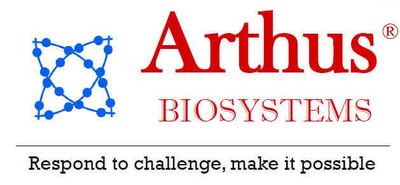

- Home
- Companies
- Arthus Biosystems, LLC
- Products
- Arthus Biosystems - Model IK00201 - ...
Arthus Biosystems - Model IK00201 - S-Adenosyl-L-Methionine (SAM) ELISA Kit
Methionine is an amino acid with sulfur methyl group, which is converted into S-adenosyl methionine (SAM) with ATP by methionine adenosyltransferase (EC 2.5.1 6). SAM is the sole methyl group donor to* over 50 kinds of biologically active substances such as DNA, RNA. protein, phospholipids, hormones and neurotransmitters, etc. After methyl group Is transferred away from SAM under a mehtyltransferase. S-adenosylhomocysteme is formed. which Is further metabolized into homocysteine |Hcy) after adenosine is removed The homocysteine is metabolized to methionine through N5-methyl tetrahydrofolate methyltransferase (EC1.1.1.68) and coenzyme vitamin B12 catalytic pathway accepting methyl from N5-methyHetrahydrofoiate. This is methionine cycle.
Methylation index is defined as the ratio of SAM and SAH. Melhylatlon index is a better marker for methylation status and methylabon capability.
SAM is used as medicines or nutritional supplements for treating depression, liver diseases, arthritis and joint pain. etc.
This immunoassay kit is used to measure the level of SAM in samples of soluble form.
Catalog No. 1K00201
Packaging size 96 tesis
Detection range 15nM - 480nM
This direct competitive ELISA (Enzyme Linked Immunosorbent assay) is designed to measure the level of S-adenosyl-L-methionine (SAM) in the sample. SAM conjugated with macromolecule is immobilized on the micro-titer plate. Standards and samples are pipetted into the wells, and then the HRP-conjugated antibody against SAM is added. The free SAM molecule in samples or standards competes with the immobilized SAM on the micro-titer plate surface for binding sites of the antibody. After discarding the mixed solution and washing each well, TMB substrate solution is added. The substrate solution turns blue under the effect of HRP (horseradish peroxidase), and changes into yellow once stop solution (acid) is added. The color develops in inverse proportion to the amount of SAM in the sample (or standards). The optical density of the remaining solution (OD450) is measured at 450nm using micro-plate spectrophotometer. The level of SAM in samples can be calculated through standard curve generated with standards.
- Sample collection must be carried out at 4°C. Remove precipitation by centrifugation when necessary, and test sample as soon as possible or store at -20°C or below. Avoid repeated freeze-thaw cycles.
- Avoid NaN3 in samples, since it will inactivate Horseradish peroxidase (HRP).
- Some unknown factors may have effects on the assay (matrix effects). Dilute samples with sample diluent or prepare standards/samples with the same matrix as the actual sample matrix, which should avoid or reduce the matrix effects.
- LRewarm all reagents to room temperature and mix them well. Take out appropriate number of wells and put the remaining wells back into the Ziploc. Seal the Ziploc and stored it at -20°C.
- Add 30ul sample diluent (blank well), standards and sample into each well.
- Prepare HRP-conjugated antibody solution: Dilute HRP-antibody with HRP-antibody diluent at 1:600, which should be used up within a week. If it will be used after a week, please prepare it when needed. Mix thoroughly and store in dark.
- Add 70ul HRP-conjugated antibody into each well except for the blank well.
- Put the plate onto oscillator and shake for a while to mix the reagents, and seal the plate with micro-plate sealer. Incubate the plate at 37°C for 1 hour.
- Peel the sealer carefully, and discard the remaining solution in the wells. Add at least 300ul wash solution in each well and maintain this state for 30 seconds, then remove wash solution. Repeat these steps 3 times to finish washing process. Or use auto-washer instead.
- Add TMB Substrate and add 100ul blending substrate to each well. Shake gently and seal the plate. Incubate the plate at 37°C for 15 minutes without light.
- Add 50ul Stop Solution to end reaction.
- Measure absorbance of each well at 450 nm wavelength within 15 minutes. Set zero according to the blank well.
Always clear the background by subtracting the absorbance at 450 nm (OD450) of blank well from that of the test well.
The binging rate of each well (standard or sample) is equal to A/Aso, with A being the average absorbance of the standard wells or the sample wells, Aso being the average absorbance of the SO standard wells.
Creation of standard curve: Construct a standard curve by plotting the binding rate of each standard on the y-axis against the logarithm of its concentration on x-axis. Use quadratic polynomial curve to fit the data (r>0.99). The SAM level of the sample can be calculated by substituting its binding rate into the standard curve equation. Then multiply the extent of dilution if the sample has been diluted.
